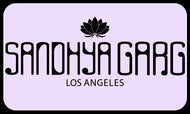Sale
Quick view


Sale
Quick view


Sale
Quick view


Sale
Quick view


Sale
Quick view


Sale
Quick view


Sale
Quick view


Sale
Quick view


Sale
Quick view


Sale
Quick view


Sale
Quick view


Sale
Quick view


Sale
Quick view


Collection Love Gaudí
Inspired by Art Nouveau, Antoni Gaudí's Architecture talents, Beautiful Barcelona, Mosaics and Gustav Klimt.
According to wikipedia-... Read More











